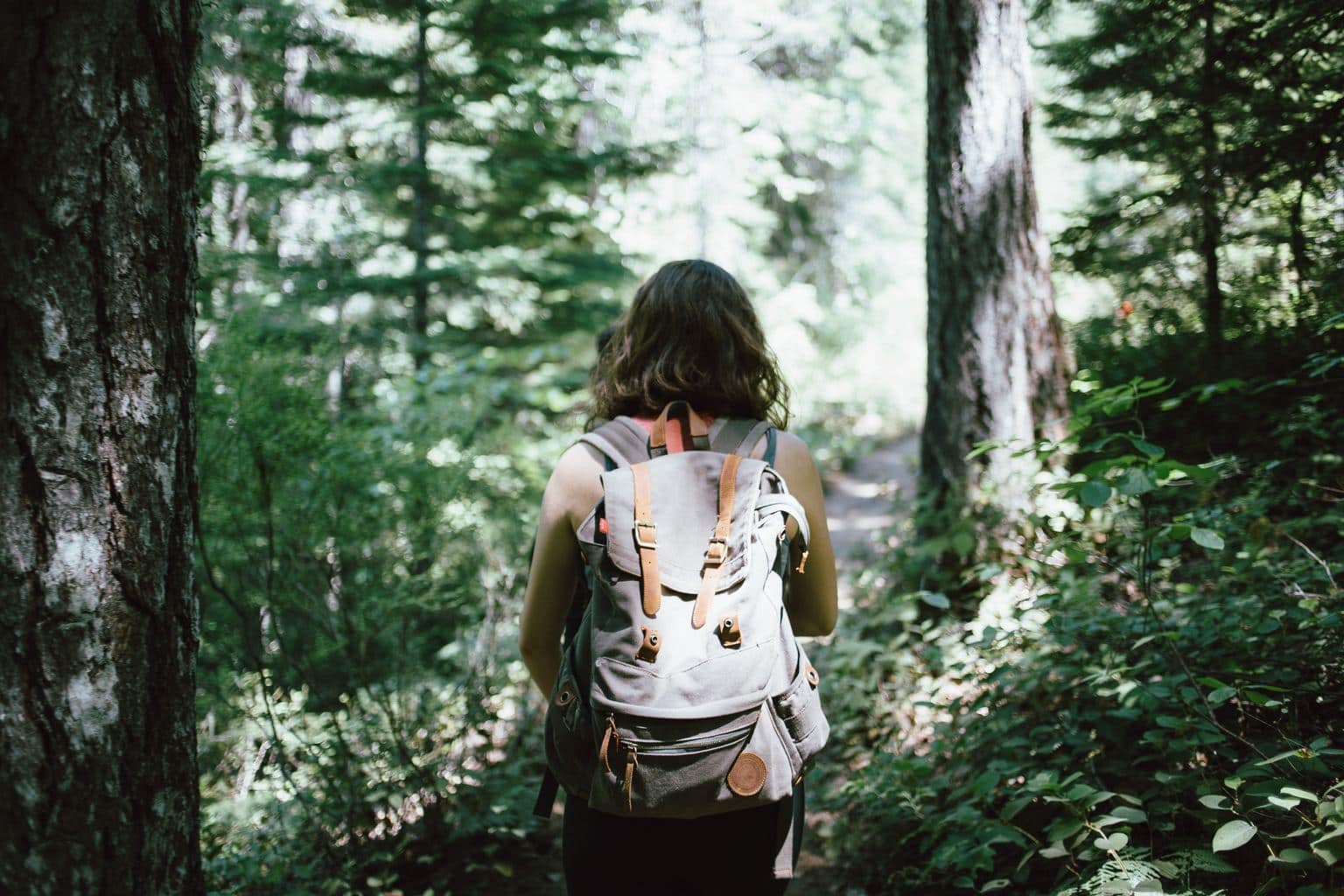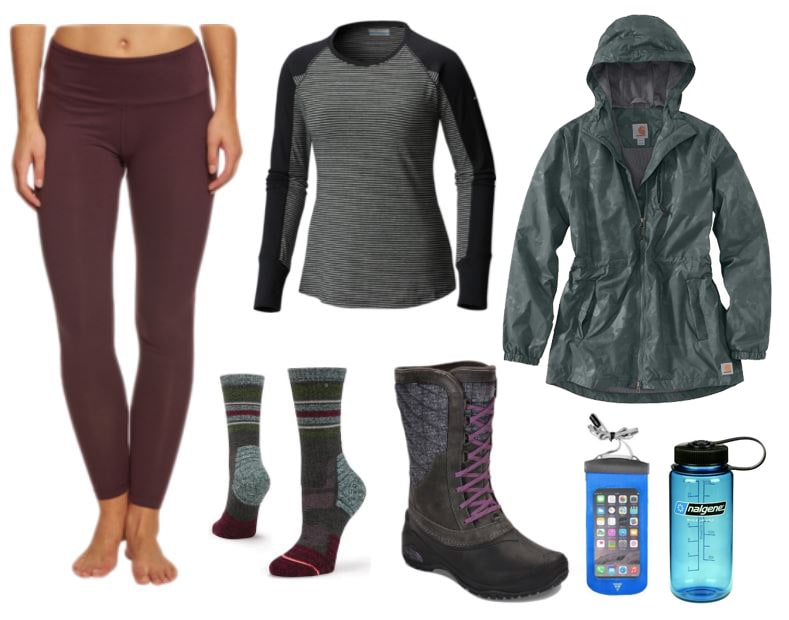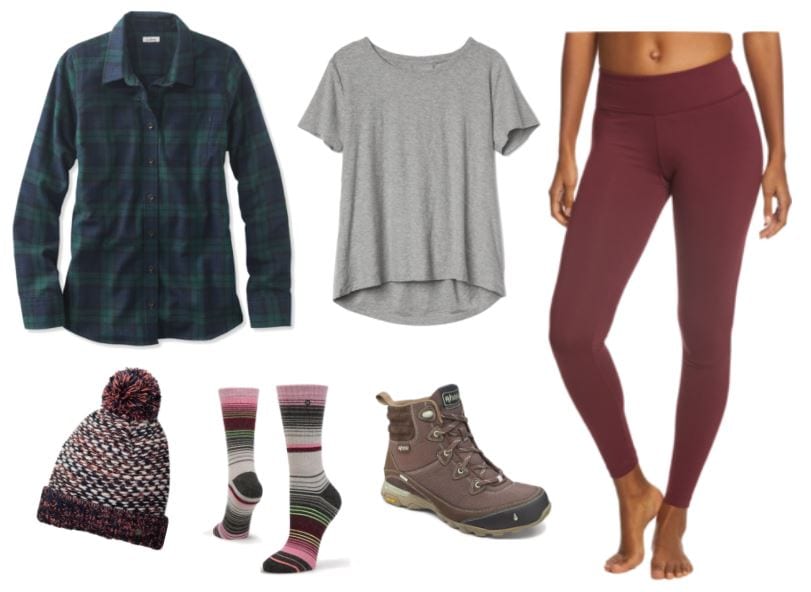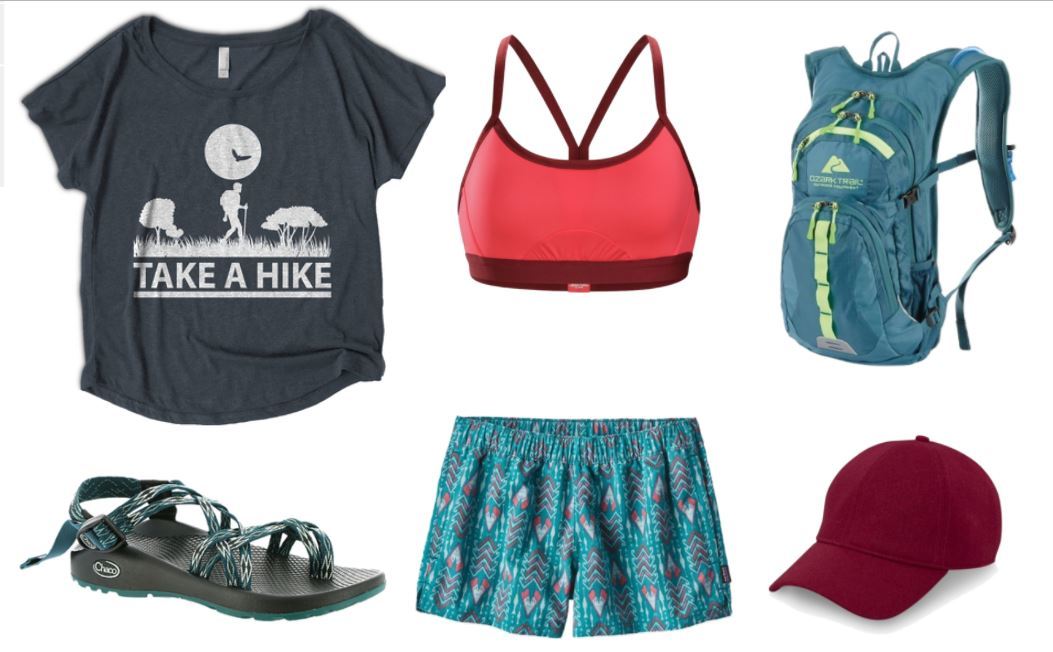
Some of us may be in the midst of Spring Break, while others are fanatically planning last minute accommodations in between classes. I used to think that Spring Break meant partying on a beach in Florida (it still does), but the more I hear others’ plans, it seems that some are more adventurous than that.
Last week, my sister spilled her Spring Break plans on road tripping to Colorado where she plans to do some first-time hiking in the Rocky National Park, but she had no idea of what to wear or bring for her first hiking trip.
As an outdoors enthusiast (or nature nerd), I felt like answering this question was my calling! I’ve trekked the Smoky Mountains, explored the Carlsbad Caverns, mountain biked around the outskirts of the Grand Canyon, admired the beauty of Monument Valley, and more.
With all this experience, I have my fair share of mistakes that were made. Okay.. okay. Lots of mistakes! But, in the words of Eleanor Roosevelt, “Learn from the mistakes of others. You can’t live long enough to make them all yourself.”
With my current knowledge, here are my tips and outfit guides that you can use for your own adventure!
Related reading: The Best Hiking Outfits for Enjoying the Great Outdoors
Table of Contents
Tip #1: Check the Weather and Bring Rain Gear Anyway
I’m embarrassed to say how many hiking trips I went on where I severely underestimated the weather. (Between you and me…we’ll just pretend it’s like two trips.)
My first battle with bad weather happened in the Tennessee Smoky Mountains during Spring where forecasters predicted a 20 percent chance of rain. This 20 percent chance of rain meant hitting a full on thunderstorm three-fourths the way up the mountain with still a 1.5 miles upward hike left until we made it to shelter. This experience was memorable… and not in a good way.
The second excursion was in the Texas Palo Duro Canyon and since it was a beautiful sunny warm day, my roommate and I didn’t check the weather. Imagine hiking 3 miles away from your car and climbing to the top of a huge rock monument called the Lighthouse to see a surprise storm approaching in the distance. Yikes! We didn’t outrun the storm but we still laugh about how we slipped and slid our way back, covered head to toe in red clay.
As an experienced hiker, I firmly believe you can never be too prepared! Always keep rain gear in the trunk of your car, waterproof your boots periodically, and pack a rain jacket in your backpack for every adventure.

Products: Leggings – Yoga Outlet; Shirt – REI; Rain Jacket – Dick’s Sports Goods; Socks – REI; Boots – REI; Waterproof Pouch – REI; Water Bottle – Amazon
If you do plan on hiking in some light rain, wear clothing made from wicking materials and waterproof outerwear to stay dry. Wearing wet clothing can lead to hypothermia or worse… chafing! (Okay…Hypothermia is worst than chafing, but chafing is still pretty bad.) The outfit above features items that are made to keep you warm and dry.
Tip #2: Dress in Layers
If you’re sensitive to temperature, layers are wonderful. The weather might be chilly, but while hiking it will feel hot. By wearing layers, you can take off items while walking to stay cool and add items back on while on your breaks when you start to feel cold again.

Products: Plaid Shirt – L.L. Bean; Shirt – Madewell; Leggings – Yoga Outlet; Beanie – Roxy; Socks – REI; Boots – REI
In this outfit, I’ve included a plain flannel that you can put on and take off easily to match the temperature. Always wear thick wooly socks to absorb sweat and add an extra layer of comfort to your feet. If you dislike the idea of foreign plants and grasses brushing up against your bare legs, wear long leggings to act as a barrier.
Tip #3: Always Pack Plenty of Water
No matter the weather, you should always pack several water bottles to keep you hydrated on the trails.
Before hiking, you should drink at least a couple cups of water. Avoid caffeinated beverages since they increase fluid loss. (Although, I’m still guilty of enjoying a cup a coffee before my hikes.) During your hike, you need to be drinking a quart of water or more per an hour. Continue to drink water after your hike to replace fluids you lost from your hike.
All in all, drink more water than you think you need since thirst is not a good indicator of your hydration level. Dehydration is some serious business and you do not want to be the one that ruins an adventure by passing out from something so easily avoidable!
Tip #4: Wear the Right Shoes
As you may have noticed, all my outfits feature sturdy hiking footwear with thick high-traction rubber soles. I’ve busted my ass enough times jumping from rocks and climbing up steep inclines that I’ve invested in a good pair of boots. Good hiking boots promote ankle support, lessen the impact of a rocky or muddy terrain, and last longer than the average tennis shoes.
Tip #5: Plan Shorter Hikes During the Summer
Although I love a good all-day hike, during the summer it can be unrealistic. In the sweltering heat, it’s hard to stay hydrated and keep sunburns at bay. This doesn’t mean you shouldn’t enjoy hiking, just plan a shorter trip than you normally would, preferably during the early morning hours when the sun isn’t as intense.

Products: Shirt – Etsy; Sports Bra – Back Country; Hydration Backpack – Walmart; shoes – Chaco’s; Shorts – REI; Baseball Cap – Belk
On hot days, stick to light and airy clothing, like the outfit above. To stay hydrated while remaining hands-free, you can invest in a hydration backpack which includes a flexible water reservoir and hose. The hose hangs outside of the bag to allow easy access to water from a sippable spout.
If you really want to wear sandals during your short hike, I suggest Chacos because of their comfort and gripping ability. Purchasing them from the manufacturer can be quite pricey, but you can purchase them second-hand on eBay or a consignment store for much less. I brought brand-new looking Chacos from ThredUp for $20.
Tip #6: Don’t forget All The Small things!
Here’s my ultimate list of hiking essentials I never leave the house without:
- Small backpack. To carry all your essentials.
- Water Bottles. Plan out the estimated length of the hike and use tip #3 to calculate how much water to bring.
- Sunglasses. Not all sunglasses are created equal, look for a pair of sunglasses that are 100% UV-blocking.
- Baseball cap
- Sunscreen. Not tanning lotion, nobody wants all the weird tanning likes that come from hiking clothing.
- Healthy Snacks. Blackberry brownies contain a fruit serving, right?
- Lunch. Make your own version of an adult Lunchable or buy one for the nostalgia.
- Tissues
- Extra pair of socks. Wet socks lead to blisters so keep your feet dry by changing them out.
- First aid kit
- Camera Phone
- Rain Coat. If you need a reminder why, re-read tip #1.
- National Park Passport. This small book looks like a replicate of an American Passport and contains information about all the national parks across the U.S. It has room to apply a unique dated passport stamp to each park you visit. (Stamping a new location to my passport legit feels like Christmas!) My bucket list goal is to visit all 58 of these National parks.
What Do You Think?
Hopefully I didn’t intimidate you with all the information in this post. I’m extremely passionate about hiking and seeing the natural wonders of our country and love to share this passion.
Let me know if I missed anything in this guide or if you found my advice helpful. Tell us all about your next adventure in the comments below!
